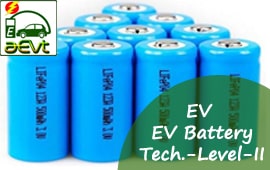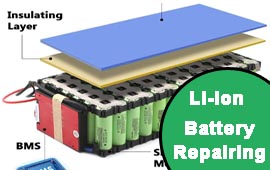Solar system Warranties 25-35 years
PR Newswire: Solar panel product warranties usually lasting 10-25 years and performance warranties 25-35 years. Different manufacturers offer varying warranty terms. Solar inverter warranties usually ranging from 5 to 25 years. String Inverters: These typically come with 7-12 years of warranty, Microinverters and Power Optimizers: These are often covered for 25 years.


Solar system warranties are important because they provide peace of mind and protection for investment in a solar power system. It is a long-term investment that can provide clean and renewable energy for decades. However, like any other complex system, it can also experience issues and failures. The Panel Warranty Term starts from the date of sale to the first customer (use by oneself) and has a certified invoice ("sales date") or 6 months after the modules are shipped out of the production plant, which the earlier date shall be effective (hereinafter short as the “Warranty Effective Date”).
1. Limited product warranty - repair, replacement or refund during use of Solar Panel
A limited product warranty generally offers repair, replacement, or a refund (at the manufacturer's discretion) for defects in materials or workmanship, but with specific limitations on coverage, duration, and circumstances.
During the warranty period, if a defect arises due to materials or workmanship, the manufacturer may offer to repair the product, replace it with a new or refurbished one, or offer a refund, but the specific remedy is often at the manufacturer's discretion. This limited warranty does not involve assurance for the module power output.
Consumers also have rights under consumer law, and may be able to claim service under those rights, even if the warranty is limited. This warranty typically covers defects in solar panel materials and workmanship, usually for 10-12 years.
2. Performance Warranty -
Solar panel performance warranties guarantee a certain level of power output over a specific period, typically 25-30 years. These warranties ensure the panels will continue to produce a specified percentage of their original rated power output, even after years of use.
A performance warranty protects against the natural degradation of solar panels, which can reduce their electricity production over time. The warranty is usually expressed as a percentage of the panel's original rated power output, for example, 90% output after 10 years and 80% after 25 years, with some manufacturers offering even longer periods, like 40 years.
If the solar panel fails to meet the performance warranty, the manufacturer is typically responsible for repairing or replacing the panel at no cost to the owner. It's important to note that the performance warranty is separate from the product warranty, which covers defects in the panel's materials or workmanship.
Solar panel performance guarantee certificate, or power warranty, The certificate specifies the minimum percentage of the panel's initial rated power output that it will maintain over the warranty period. If the panel fails to meet the guaranteed power output, the manufacturer is usually responsible for repair or replacement. The actual power output of the module is typically determined using Standard Testing Conditions (STC) for verification. Certain damage, such as that caused by shadows or improper installation, may not be covered by the warranty.
3. Linear and Stepped Warranty -
Solar panel manufacturers generally provide a linear warranty on their top-performing modules. It progresses at a constant rate year-over-year and generally offers more coverage as compared to a step warranty.
4. Installation Warranty / Workmanship warranty -
This warranty covers the quality of the installation and workmanship, often for 5-10 years. It will typically cover the labor and equipment from a faulty installation. These typically cover the equipment itself and often exclude labor costs associated with replacing malfunctioning modules. Many solar companies offer separate labor warranties, which can cover labor costs for a designated period, often ranging from 1 to 10 years.
Modules not installed according to the manufacturer's specifications can void a solar panel warranty. This includes failure to use the recommended mounting equipment or improper wiring.
5. Inverter Warranty
Solar inverters typically come with warranties ranging from 5 to 10 years, sometimes even longer for microinverters or specific extended warranties.
-
Product Warranty: This covers defects in materials and workmanship, ensuring the inverter functions correctly as intended.
-
Performance Warranty: While less common for inverters, some manufacturers offer a performance warranty, guaranteeing a certain level of energy output over a specific period.Extended Warranties:Some manufacturers offer extended warranty options, potentially increasing the coverage period or scope.Warranty Periods:String Inverters: Typically come with 10-12 years of warranty coverage.Microinverters: May have longer warranty periods, sometimes up to 25 years.Communications Equipment: communications equipment, like those that connect to communication with other devices, might be covered for 5 years.
Be sure to review the specific terms and conditions of the warranty provided by the manufacturer to understand what is covered and what is not. Full Replacement, Parts and Labor Warranty etc.
6. Solar Module Mounting Structure (MMS) Warranty
Solar Module Mounting Structures (MMS) typically come with a warranty covering defects in materials and workmanship, as well as structural integrity. Most manufacturers offer a standard warranty of 5-10 years. Additionally, some manufacturers may offer extended warranties or performance warranties guaranteeing the structural integrity of the MMS for a longer period, often 25-30 years. These may guarantee a certain level of performance, such as the ability to support solar panels with minimal degradation, for a period of 25-30 years.
-
Defects in Materials and Workmanship:This covers any issues arising from the manufacturing process of the MMS, such as rust, corrosion, or structural flaws.
-
Structural Integrity:This ensures the MMS can withstand environmental conditions like wind loads, snow, and other stresses.
-
Performance Warranty:Some warranties may include a guarantee of the MMS's ability to support solar panels and maintain their intended performance over a specific timeframe.
7. Solar Battery Warranty
Solar battery warranties typically range from 3 to 7 years, covering manufacturing defects and some aspects of performance, but may exclude damage from accidents, improper installation, or external forces.
Some manufacturers may also offer a performance guarantee, which ensures the battery maintains a certain level of capacity over a specific period.
8. Solar AJB/MJB/DCDB Warranty
Solar AJBs (Array Junction Boxes) typically come with a 1-year warranty covers defects in the AJB's components, such as the surge protection device (SPD), fuses, and the enclosure itself and workmanship. This means if the AJB fails due to a defect within the first year, it can be repaired or replaced under warranty. Some brands also offer a performance warranty, guaranteeing a certain level of energy output over a longer period, but this is usually specific to the panels and not the AJB itself.
Damage caused by misuse, improper installation, or external factors like lightning strikes are generally not covered under warranty.
9. Solar Cable Warranty
Solar cables typically come with a warranty, usually ranging from 1 year to 5 years. Solar cable warranties generally cover issues arising from manufacturing defects or flaws in the cable's construction. A warranty provides assurance that the cable will perform as expected for a specified period, protecting the homeowner from potential costs associated with replacement or repair due to manufacturing defects.
Warranties often exclude damage caused by misuse, improper installation, or external factors like natural disasters.
10. Solar Installer Warranty / Workmanship Warranty
Solar installer warranties typically cover workmanship and installation quality, ranging from 1 to 25 years. They also often include performance guarantees, ensuring a certain level of electricity output over the warranty period.
This covers defects and damages caused during the installation process. It ensures the system is installed correctly and protects against issues arising from the installer's work. Some installers offer a comprehensive system warranty that covers all aspects of the installation.
Insurance Policy for Power Projects
If you have solar panels on your home or business, you will want property insurance to protect the value of solar panels – regardless of whether you own them or lease them.
For residential, if you have solar panels on your home you should be able to add them to your homeowner’s policy by just calling your insurance carrier.
For commercial or utility scale solar arrays you will want a separate commercial solar property insurance policy.
Visit MNRE Insurance products for Solar Power Plants – regarding
| Warranties | Certifications |
Solar Panels |
|
|
Modules are typically warranted against manufacturing defects for a period of 5 years. In addition, their power output is also warranted
This means that a 200 Wp panel will generate as much power as a 180 Wp panel in 10 years’ time (90%) and 160 Wp panel in 25 years’ time (80%). |
The crystalline PV module (which are predominantly used in rooftops over thin-film modules) should be certified to comply with
Panels should also be supplied with the MNRE mandated RFID tag that allows the panels to identified and tracked to the manufacturer for verifying performance. |
Inverters |
|
| Inverters are typically warranted for 1 year, with optional extension up to 5 years |
|
Mounting structures |
|
| Mounting structures are typically warranted for 1 year, with optional extension up to 5 years. | |
Batteries |
|
| Batteries are typically warranted for 1 year, with optional extension up to 5 years. |
While battery certifications would depend on the application for which they are required, consumers can perform simple checks to verify if the battery is genuine
|
Charge Controller/MPPT units |
|
| Charge controllers and MPPT units are typically warranted for 1 year, with optional extension up to 5 years. |
|
Cables |
|
| Cables are typically warranted for 1 year, with optional extension up to 5 years. |
|
Junction Boxes/Enclosures for Inverters/Charge Controllers/Luminaries |
|
| Junction boxes and enclosures are typically warranted for 1 year, with optional extension up to 5 years. |
|
-
Claim Procedure:To make a warranty claim, you typically need to contact the manufacturer or authorized service provider, providing proof of purchase and a description of the defect.
-
Warranty Documents:It's crucial to keep warranty documents readily available for future reference, especially if any issues arise with the solar system.
-
Proper Installation:Following the manufacturer's guidelines for installation and maintenance is essential to ensure the warranty remains valid.
It's crucial to review the specific warranty terms and conditions provided by the manufacturer or seller, as they may vary.
RE News: Renewable energy Latest News & Resources - including solar, wind, hydropower, biofuels and others new and appropriate energy generation technology.




















